February, 1932

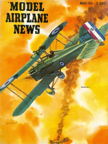
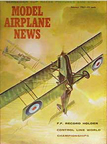
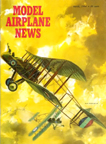
Royal Aircraft Factory SE5A, FE2b, and RE-8
Model Airplane News Cover Art for February, 1932, March, 1953, January, 1961 and March, 1964
by Jo Kotula
Click to Enlarge
The SE5A
Click here for the FE2BClick here for the RE-8
The S.E.5 (Scout Experimental 5) was designed by Henry P. Folland, J. Kenworthy and Major F.W. Goodden of the Royal Aircraft Factory, in Farnborough. The first of three prototypes flew in 1916. The first two prototypes were lost in crashes (the first killing Major Goodden) due to a weakness in their wing design. The third prototype corrected the faults in the first two - the S.E.5 became known in service as an exceptionally strong aircraft which could be dived at very high speed.
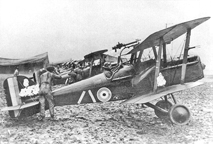

Photos of the Royal Aircraft FactorySE-5-a
Click to Enlarge
Like the other significant Royal Aircraft Factory aircraft of the war (B.E.2, F.E.2 and R.E.8) the S.E.5 was inherently stable, making it an excellent gunnery platform, but it was also quite manoeverable. It was one of the fastest aircraft of the war, at 138 mph equal at least in speed to the SPAD S.XIII, and faster than any standard German type of the period. The S.E.5 was not as effective in a dog fight as the Sopwith Camel, as it was less agile, but it was easier and safer to fly, particularly for novice pilots.
The S.E.5 had only one synchronised .303-in Vickers machine gun to the Camel's two. However it did have a wing-mounted Lewis gun that enabled the pilot to fire at an enemy aircraft from below, as well as forward. This was much appreciated by the pilots of the first S.E.5 squadrons, as the synchronising gear for the Vickers was unreliable at first. The Vickers gun was mounted on the left side of the fuselage with the breech inside the cockpit. The cockpit was set amidships, making it difficult to see over the long front fuselage, but otherwise visibility was good. Perhaps its greatest advantage over the Camel was its superior performance at altitude - so that (unlike most Allied fighters) it was not outclassed by the Fokker D.VII when that fighter arrived at the front.
Here is a video of the Royal Aircraft FactorySE-5-a in action:
Jo Kotula revisited the S.E. 5 in the "Box Art" for the Aurora kit.
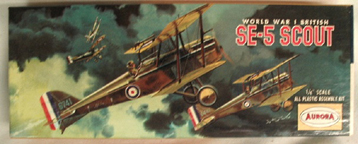
Aurora Plastic Model of the R.A.F S.E. 5
Artwork by Jo Kotula
Click to Enlarge
Click Here for more information about the Royal Aircraft FactorySE-5-a.
The FE2B
Click here for the SE5AClick here for the RE-8
The Royal Aircraft Factory F.E.2 was a two-seat pusher biplane that was operated as a day and night bomber and as a fighter aircraft by the Royal Flying Corps during the First World War. Along with the single-seat D.H.2 pusher biplane and the Nieuport 11, the F.E.2 was instrumental in ending the Fokker Scourge that had seen the German Air Service establish a measure of air superiority on the Western Front from the late summer of 1915 to the following spring.
The F.E.2 (F.E. ="Farman Experimental") designation actually refers to three distinct designs - although all were pushers based on the general layout employed by the French aircraft designers, the Farman Brothers. The first F.E.2 was developed by the Royal Aircraft Factory in 1911 by "rebuilding" the F.E.1 - a "boxkite" style biplane designed and built by Geoffrey de Havilland before he joined the Factory's staff. A further design with the "F.E.2" designation came out in 1913, but was destroyed in a fatal crash when the pilot, R. Kemp, lost control while in a dive. These designs are properly included in the F.E.1. Series.
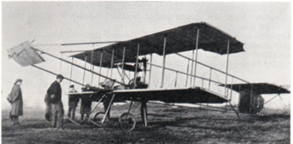

Progenitor and Successor (L) F.E.-1 (R) Bristol FB2
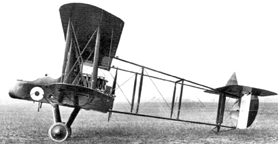
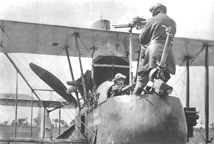
RAF F.E. 2b and F.E. 2d
The gunner was in a precarious position...
Click to Enlarge
The F.E.2a that appeared in February 1914 was yet another totally new design, specifically intended as a "fighter". The first production order was placed in August. By this stage, the "pusher" design was becoming obsolete as far as aerodynamic performance was concerned, however, the RFC had not yet solved the problem of firing a machine gun through the propeller of a tractor aircraft (which the Germans were shortly to manage using Anthony Fokker's interrupter gear) and consequently, pushers, with a clear forward field of fire, remained the favoured configuration for fighters. The F.E.2 was a two-seater with the observer sitting in the nose of the nacelle and the pilot sitting above and behind. The arrangement was described by Frederick Libby, first American ace of World War I as follows:
"...When you stood up to shoot, all of you from the knees up was exposed to the elements. There was no belt to hold you. Only your grip on the gun and the sides of the nacelle stood between you and eternity. Toward the front of the nacelle was a hollow steel rod with a swivel mount to which the gun was anchored. This gun covered a huge field of fire forward. Between the observer and the pilot a second gun was mounted, for firing over the F.E.2d's upper wing to protect the aircraft from rear attack ... Adjusting and shooting this gun required that you stand right up out of the nacelle with your feet on the nacelle coaming. You had nothing to worry about except being blown out of the aircraft by the blast of air or tossed out bodily if the pilot made a wrong move. There were no parachutes and no belts. No wonder they needed observers..."
The F.E.2c was an experimental night fighter and bomber variant of the F.E.2b, the main change being the switching of the pilot and observer positions so that the pilot had the best view for night landings. Two were built in 1916, with the designation being re-used in 1918 for a similar night bomber version of the F.E.2b, which was used by 100 Squadron. In the end, the "observer-first" layout was retained for the standard aircraft. A total of 1,939 F.E.2b/cs were built.
The final model was the F.E.2d (386 built) had a bigger engine that improved speed, height and payload, so that in addition to the two observer's guns, an additional one or two Lewis guns could be mounted to fire forward, operated by the pilot. The F.E.2d was eventually replaced by the Bristol Fighter, the older F.E.2b proved an unexpected success as a light tactical night bomber, and remained a standard type in this role for the rest of the war. Its climb rate and ceiling were too poor for it to make a satisfactory night fighter.
Here is a video of the RAF F.E. 2b in action:
Click Here for more information about the RAF F.E. 2b and F.E. 2d.
The RE-8
Click here for the FE2BClick here for the SE5A
The Royal Aircraft Factory R.E.8 (Reconnaissance Experimental 8) was a British two-seat biplane reconnaissance and bomber aircraft of the First World War. It was designed as a replacement for the vulnerable B.E.2, but turned out to be much more difficult to fly, and was regarded with great suspicion in the Royal Flying Corps. Although eventually it gave reasonably satisfactory service. Although it was never an outstanding combat aircraft, the R.E.8 served as the standard British reconnaissance and artillery spotting aircraft from mid-1917 to the end of the war, serving alongside the rather more popular Armstrong Whitworth F.K.8. Over 4,000 R.E.8s were eventually produced and they served in most theatres including Italy, Russia, Palestine and Mesopotamia, as well as the Western Front.
The first of two prototype R.E.8s flew in June 1916. The new type was specifically designed to overcome the drawbacks of the B.E.2 - it had a more powerful motor, giving an improved performance, in particular a heavier payload. It was also much better armed, with a synchronised forward-firing .303-in Vickers machine gun and one or two Lewis gunsin the observer's cockpit. Modifications had to be made to improve stability before it could gain acceptance by pilots used to the B.E.2e - making the production version a good platform for artillery spotting but giving it little chance of out-maneuvring enemy fighters.
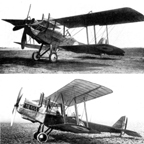
Photos of the Royal Aircraft Factory RE-8
Click to Enlarge
Most R.E.8s were powered by the 150 hp Royal Aircraft Factory 4a air-cooled 12-cylinder inline engine The engine was installed so that the propeller inclined upwards to improve the takeoff and landing run This produced a "broken back" appearance to the fuselage,and an illusion that the tail sloped upwards. As with most RAF engine installations, the twin exhausts protruded over the upper wing to carry the fumes clear of the crew. As with the B.E.2e, the long extensions on the upper wing were reputed to be liable to collapse if the aircraft was dived too sharply. Eventually 4,077 R.E.8s were produced with a further 353 on order cancelled at the end of the war.
Here is a video of the Royal Aircraft Factory RE-8 in action:
Click Here for more information about the Royal Aircraft Factory RE-8.
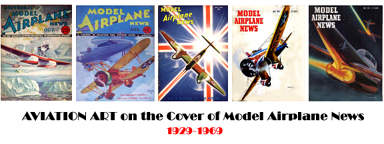
Click to go back and select another cover.
Counter for the Entire Site (not just this page..)
Home | About Lindy | Last Week's Reviews | Upcoming Events | 1940s Collecibles
The Guide - Establishments - Travel - Accessories
Music | Links | Photo Gallery | Extras | Contact